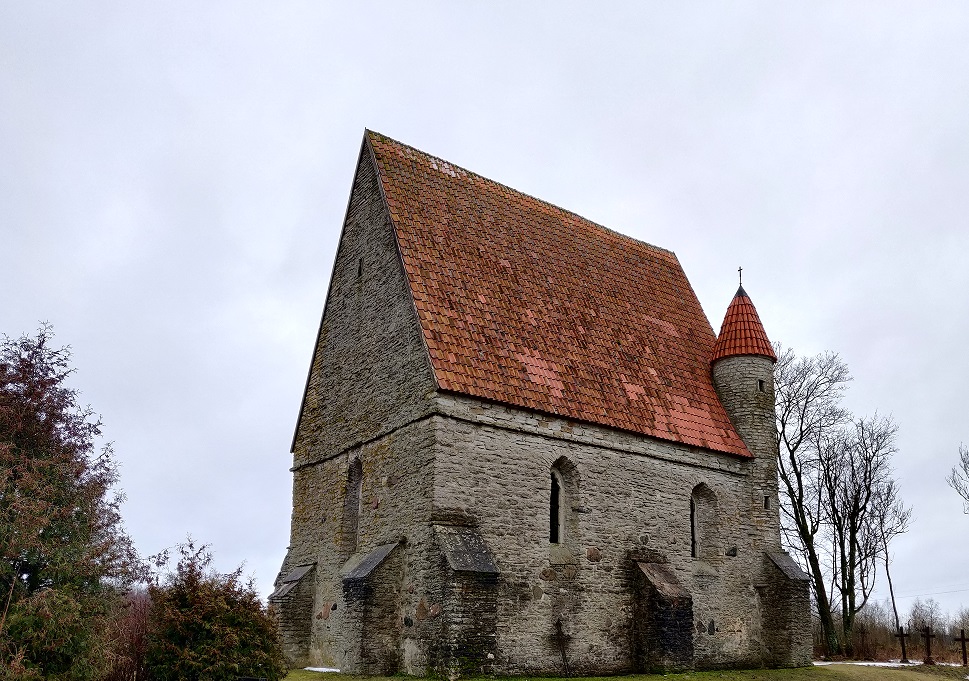The night of ancient lights held in August is a common custom on all the beaches of the Baltic Sea
The word ‘meri’ (‘sea’) has been used in Estonian for ten thousand years or more. The sea separates and the sea connects – regional differences in folk culture and lifestyle have developed along the water’s edge. Coastal people have been dependent on the changing sea, which has shaped their daily culture and spirit, beliefs and customs, and traditional way of life [1].

Estonians have always considered the sea sacred. In order to catch fish, the beliefs and customs passed down from generation to generation were observed, which is why there are many commands and prohibitions based on beliefs in folklore. Before going to and/or after returning from the sea, prayer meetings have been held in coastal chapels, which people used to call ‘fish chapels’ [1].
Estonians have portrayed the sea as a woman. The moody water- or sea-mother had to be treated with respect and appreciation, and it was customary to offer a sacrifice of thanks to the sea-mother for the catch. However, people have also brought sacrifices to, for example, the sea giant and the water spirit Kolju-taat, which is also known in Finnish folklore. It was believed that the Kolju-taat would punish all fishermen who did not sacrifice. Both fish and alcohol, salt, and bread were sacrificed; it was often thrown directly into the sea. When fishermen returned to the land, part of the fish catch was donated to the poor and disabled of the village, believing that this would bring continued good luck in fishing [1].
Sometimes, before going to sea, people went to a sacred grove or a sacred tree to ask for a blessing for their seafaring – this is where Christianity and folk customs are closely intertwined. For good fortune, people did both - prayed at the Christian chapels and sacrificed to the sea. The patron saint of fishermen and sailors is St. Nicholas, to whom several chapels built on the beaches have been dedicated to after escaping from a shipwreck. For example, the Saha Chapel near Tallinn [1].
The coastal people communicated with the Nordic peoples, and many customs and anniversaries were borrowed from them. Influenced by Scandinavia, for example, some people bring Christmas straws or Christmas crowns to their homes during Christmas, and the August Night of Ancient Lights, which aims to promote unity among the coastal and rural peoples of the Baltic Sea, is a common custom on all Baltic beaches [1].
The coastal people earned their living mainly by fishing and also by seal hunting. Both men and women went fishing by whole villages. The oldest permanent fishing village in Pärispea is mentioned in written sources as early as in 1295. In addition to fishing, the coastal villages also engaged in shipbuilding, shipping, and the training of seafarers [1].
A phenomenon related to coastal villages was vodka smuggling. It began in 1919, when the sale of vodka was banned in Finland. In the early 1920s, the coastal people started to secretly took the spirits to Finland. Many spirit smugglers were fishermen who knew the fishermen across the gulf – the business was well organised and soon reached a mass scale. It is alleged that government officials were also involved. A lot of money moved in this business, ‘spirit kings’ emerged, leading the work of an extensive network. Such a life lasted only 10 years, but had a great impact on local life [2].
A particular cultural phenomenon in Estonian coastal areas were the Estonian Swedes (coastal Swedes) who have lived in Estonian coastal areas and larger islands since at least the thirteenth century. In the middle of the seventeenth century, about 10,000 Swedes lived in Estonia; even at the beginning of the twentieth century, they formed the majority of the population in some areas. However, most of the population moved to Sweden or were deported in the last years of World War II. In 2006, the establishment of a cultural autonomy was started and the Autonomous Swedish Minority Council was established: several churches and other important monuments were restored, and the Aibolands Museum in Haapsalu and the Swedish St Michael’s Church in Tallinn were established as meeting places. Every third year, the Estonian Swedes song and dance festival and summer events take place in historic coastal Swedish settlements [3].
As the Estonian coast was also the external border of the USSR during the Soviet era, the entire offshore coast and islands were transformed into a border zone. Military towns and border guard cordons were built in these areas, and people living elsewhere had to apply for a permit to move around there. Although military sites tend to have a devastating effect on nature, the closed border zone ensured the integrity and good condition of biota in many places.
The effects of the sea are noticeable in all areas of culture, be it material or spiritual heritage. The new, inherited from previous generations and created by ourselves or taken over from someone, has always shaped the Estonian culture as a whole. The marine culture is a synthesis of many different aspects of culture, including art, design, clothing, music, theatre, and cinema.
Last modified: 15.11.2021
__________________________________________________
[1] M. Kõivupuu, V. Palginõmm. Meri annab, meri võtab, meri mehegi matab. Eesti Loodus, 2011. http://vana.loodusajakiri.ee/eesti_loodus/artikkel4223_4202.html
[2] Eesti-Soome salapiirituseäri. http://185.46.22.81/index.php?&event=Show_main_layers&layer_id=255